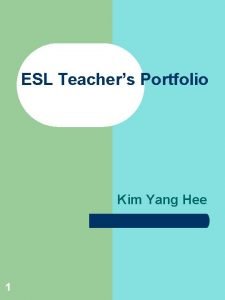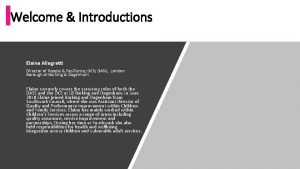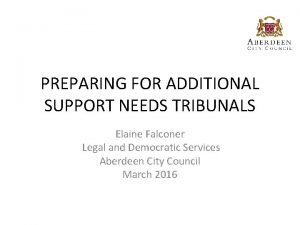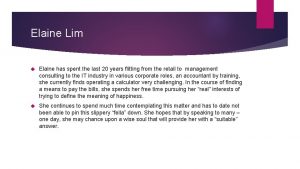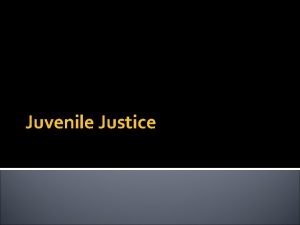Developing a Teaching Portfolio Participants Elaine Justice Psychology












- Slides: 12

Developing a Teaching Portfolio Participants: Elaine Justice, Psychology Wayne Hynes, Biology David Metzger, English C. Ariel Pinto, Engineering Management and Systems Engineering

What is a Teaching Portfolio? • A document that describes what, why, and how you teach – Your “Philosophy of Teaching”

What is a Teaching Portfolio? • Articulates goals and assumptions about teaching • Angelo &Cross (1993) – Develop ability to apply principles and generalize to new problems & situations – Develop the ability to think for oneself – Develop analytic skills – Learn the terms and facts of the subject matter

What is a Teaching Portfolio? • Articulates how goals are related to what we do in the classroom – Lecture vs. discussions vs. demonstrations – Multiple choice vs. essay tests – Out-of-class assignments – Types of readings

Purposes of a Portfolio • To support and improve teaching – A process of development over time • To document your teaching experiences and abilities – Job applications – Promotion and/or tenure

What goes into a Teaching Portfolio • The document – Relatively brief – 8 -12 pages. – Include a table of contents • Artifacts of teaching – Appendices: supporting materials to illustrate points made in the text

The Text of Your Portfolio • Begin with the courses you teach (or feel competent to teach) • Articulate your understanding of how students learn • Describe your goals for your students • Discuss how your classroom activities and assignments relate to your goals

The Text of Your Portfolio • Indicate how your assessments measure whether your goals have been met • Discuss how your view of teaching fits with the goals of the department or university.

Teaching Artifacts • From yourself – Course materials (syllabi, handouts, copies of Power. Points, etc. ) – Representative student samples of graded assignments – Record of advising done – Record of student achievements – Video of teaching a class

Teaching Artifacts • Artifacts from Others – Student teaching evaluations – Written review of teaching by a peer or supervisor – Copies of letters related to teaching evaluation or awards – Testimonials from students

Teaching Artifacts • Evidence of subscribing to journals on teaching • Evidence of attending conferences or workshops on teaching (like PFF!) • Membership in teaching organizations • Other evidence of teaching scholarship (articles, textbooks, curriculum development)

Resources • A guide to the Teaching Portfolio, University of New Hampshire website: http: //www. gradschool. unh. edu/PFF/p ortfolio. pdf • E. B. Rasmussen (2006) Creating teaching portfolios. In W. Buskist & S. F. Davis, Handbook of the teach of psychology (pp. 301306). Malden, MA: Blackwell Publishing • T. A. Angelo & P. K. Cross. (1993). Classroom assessment techniques: A handbook for college teachers. San Francisco: Jossey-Bass.
 Elaine justice
Elaine justice Developing great teaching
Developing great teaching What is portfolio
What is portfolio Features of portfolio assessment
Features of portfolio assessment Esl teacher introduction sample
Esl teacher introduction sample Portfolio assessment matches assessment to teaching
Portfolio assessment matches assessment to teaching Phases of microteaching
Phases of microteaching Elaine ferneley
Elaine ferneley Elaine allegretti barking and dagenham
Elaine allegretti barking and dagenham Elaine shi
Elaine shi Elaine falconer
Elaine falconer Dr elaine clark paediatrician
Dr elaine clark paediatrician Elaine mandel
Elaine mandel




